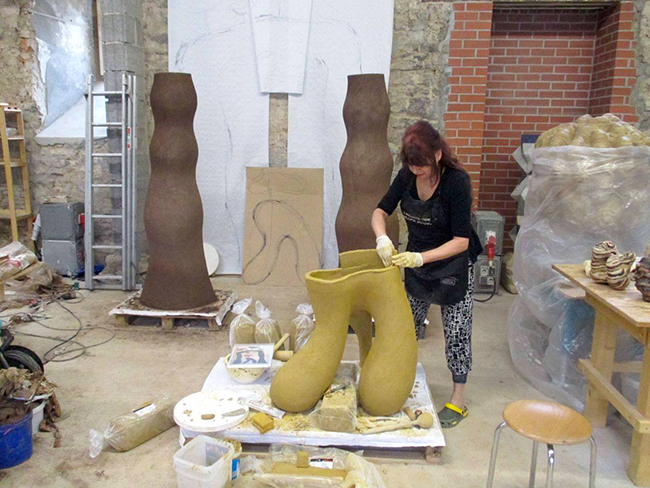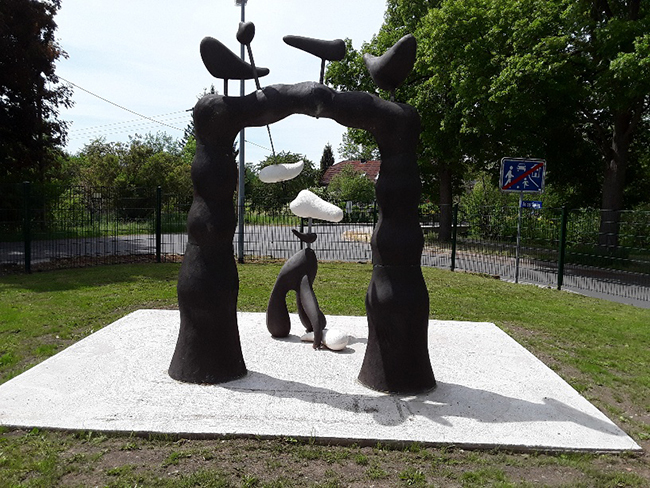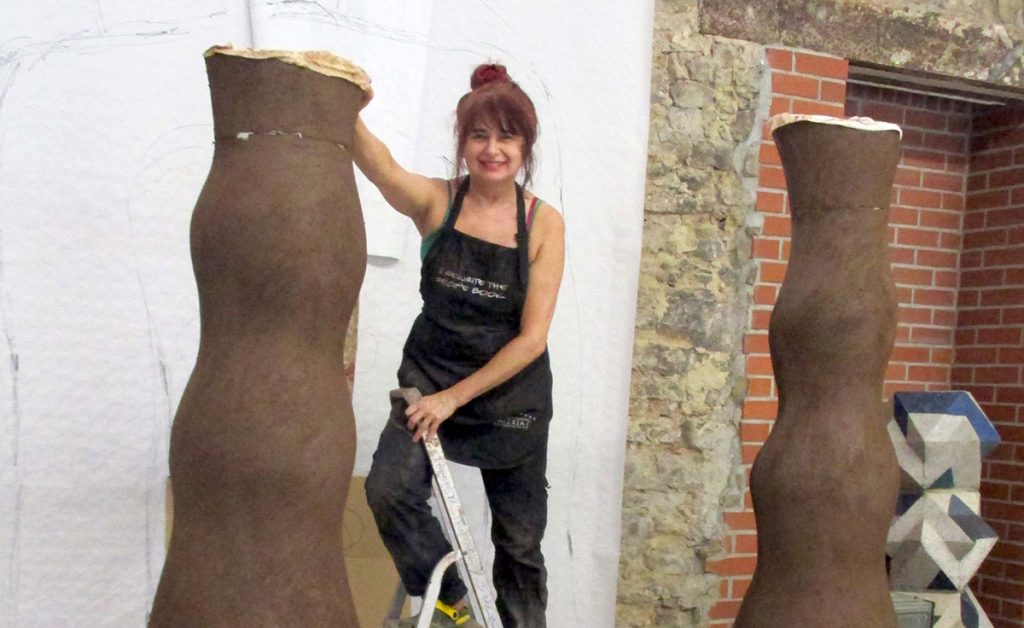Sylvia Nagy’s work moves between precision and emotion, structure and spontaneity. With a background that blends industrial technology and art, she brings a unique sensibility to contemporary ceramic design. Educated at Moholy-Nagy University in Budapest and later a faculty member at Parsons School of Design, Nagy has cultivated both deep technical knowledge and an intuitive artistic voice. Her ceramic works are grounded in research and shaped by personal exploration—like her fascination with arches and columns sparked by a visit to Arizona. Each piece reflects an ongoing conversation with history, science, and philosophy. She doesn’t dictate meaning but offers space for reflection, trusting viewers to bring their own interpretations. Her art feels both tactile and cerebral, rooted in place yet open to the imagination. In this interview, Nagy speaks about her creative phases, and a tender story that helped bridge the gap between her work and her poet mother’s understanding.

Here is the artist’s interview.
What is your creative process like?
I have certain periods in my colors and themes, like my black and white and red periods, when I didn’t like other colors. I had more colorful periods, and now, before Covid-19, I love orange in my fashion, paintings and sculptures. I am a good listener. I like to read, research history, science, and philosophy, understand other artists’ works and their meanings, and go to exhibitions, it depends on my feelings and the theme of the next visual work.
Do any personal experiences shape your work?
During a visit to Arizona a few years ago, I was fascinated by the arches by the nature, so I made arches myself. From time to time, I get different expressions from my conscious mind, for example, the symbol of the arch and column, which has had many meanings over the centuries, before and after the Roman, Greek Empires. And what this means in today’s world, I don’t know, but I’m researching its history, websites for my upcoming ceramic series. https://en.wikipedia.org/wiki/Arches_National_Park
What challenges do you face as an artist?
Since art is a feeling, people can have different reactions and expressions to a visual work of art. I don’t like to tell people what to think, but I encourage them to think about the artwork with positive energy.
What do you want people to feel when they see your art?
A lovely anecdote from my poet mother, who didn’t understand my art and spent years trying to give me ideas for beautiful classical sculptures. I didn’t answer these, but once she honestly admitted that she hadn’t studied art as much as I had and didn’t understand my sculptures. I felt sorry for her and asked her back: if she put words together in rhythmic forms, since no one had ever organized them like that and in a theme. She said yes. So what does it say about me if I do the same thing, only in visual form? Oh, then I understand! From then on we became best friends and she never interfered with my work

Sylvia Nagy creates with intention, curiosity, and a quiet invitation to look deeper. Her ceramics are not simply objects but visual questions—echoes of architecture, memory, and feeling. She resists telling people what to see, instead encouraging thought, energy, and openness. From the arches of the American Southwest to the quiet rhythm of her color phases, her practice is as much about discovery as it is about creation. In every piece, there’s a layered story—shaped by travel, study, and the subtle conversations between generations. Nagy’s art asks us to slow down, to wonder, and to consider the deeper forms shaping our world.


